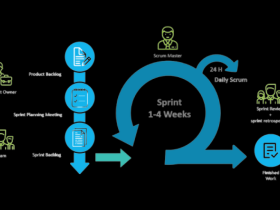Goods and Services Tax (GST) is a comprehensive tax system introduced in India on July 1, 2017, with the aim of replacing multiple indirect taxes that the Central and State governments levied. It is a uniform tax that has been implemented throughout the country to streamline the taxation system and reduce the cascading effect of taxes on goods and services.
Tax Slabs and Exemptions under GST Regime
Under the GST regime, all goods and services are taxed under four different tax slabs, namely 5%, 12%, 18%, and 28%. However, there are certain goods and services that are exempted from GST or fall under a special tax rate of 0.25% or 3%. The GST council is responsible for fixing the tax rates and revising them from time to time based on economic conditions and revenue collection.
Advantages of GST for Businesses and Consumers
- One of the main advantages of GST is that it has helped simplify the taxation system in the country. It has replaced the complex system of multiple taxes, such as excise duty, service tax, VAT, and others, which both the Central and State governments levied. With the introduction of GST, the tax collection process has become more streamlined, bringing down compliance costs for businesses.
- Another advantage of GST is that it has helped in reducing the cascading effect of taxes on goods and services. In the earlier tax system, the taxes were levied at multiple levels, which resulted in a higher tax burden on the end consumers. With the introduction of GST, the tax is levied only at the final point of consumption, bringing down the tax burden for the end consumers.
Importance of Checking GST Application Status for Businesses
Checking the GST application status is important for businesses to ensure that their registration is processed and approved on time. Once a business submits its GST registration application, it can track the status of its application by using the Application Reference Number (ARN) received after submission. The status of the application can be checked online through the official GST portal, by calling the GST helpdesk, or by sending an email to the GSTN.
How to Check GST Application Status:
- Visit the official GST portal – www.gst.gov.in
- Click on the ‘Services’ tab and select ‘Registration’ from the dropdown menu.
- Click on ‘Track Application Status’ and enter the Application Reference Number (ARN) received after submitting the application.
- Once you have entered the ARN, you will need to fill in the captcha code.
- After entering the captcha code, click the ‘Search’ button to proceed.
- Upon clicking the button, the portal will retrieve the information and display the application status on your screen.
Challenges in the Implementation of GST for Businesses
However, the implementation of GST has also brought some challenges for businesses. The initial phase of GST implementation saw some technical glitches, and businesses faced difficulties filing their returns. The small and medium-sized enterprises faced compliance issues that impacted their cash flows.
Conclusion
In conclusion, GST is a significant tax reform in India that has helped simplify the taxation system and reduce the cascading effect of taxes on goods and services. While it has brought down the compliance cost for businesses, it has also posed some challenges in its implementation. The government needs to take proactive measures to address these challenges and ensure that GST benefits all stakeholders in the long run.








Leave a Reply